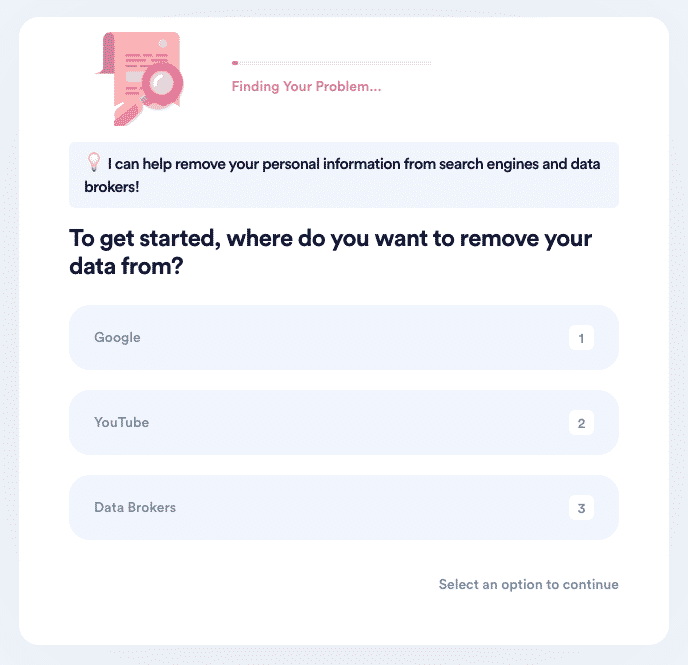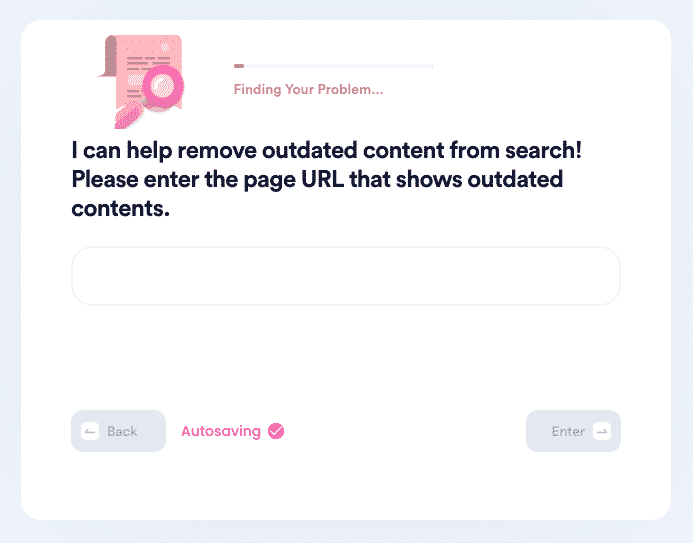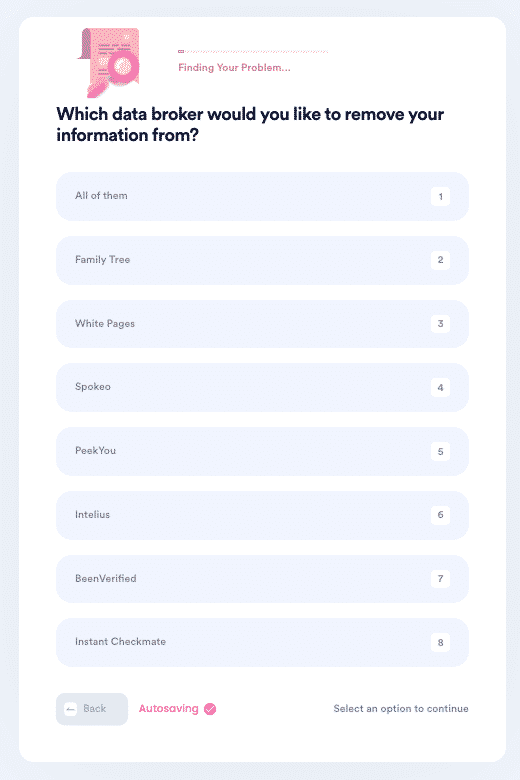How to Take Down Your Email from the Internet
Not too many things in today's world are more annoying than unwanted emails. Once your email address winds up in various accounts on various websites, your inbox may seem to be under attack from all directions.
It can be challenging to remove - but it can be accomplished.
Learning can be tricky. There are ways to approach it in a do-it-yourself manner, but offers a convenient, automated way to handle this if you find it frustrating attempting the removal yourself.
Why Is Removal of My Email Address So Challenging?
To accomplish almost anything online, you are often required to sign up for a free account (using your email address) or provide your email to receive further information.
Unfortunately, most websites get paid to share your email address with other sites that may bombard you with unwanted spam messages in the future. As copies of your email address proliferate across the internet, it can be difficult to stop so many messages headed your way. Additionally, some sites may not be as quick or responsive when you request the .
Follow these instructions to begin cleaning up your virtual email trail:
| Do Not Respond | AARP recommends that any obvious spam message should simply be deleted and ignored. While you might be tempted to click an unsubscribe link found within the email, many unscrupulous senders will take advantage of your click. It will be a sign that your email address is valid and active, encouraging future spam messages. |
| General Unsubscribe Option | Most legitimate businesses provide a helpful unsubscribe link near the end of the mail, and it is likely to be honored and result in your email address removal. Sadly, it is often in tiny, hard-to-read print and may not even look like a link. Businesses, after all, are not eager for you to unsubscribe and therefore do not make it easy for you to do so. The link should take you to a webpage that confirms you have been unsubscribed or asks you to click a checkbox to complete the process. |
| Google Gmail’s Unsubscribe Option |
|
| Microsoft Outlook Unsubscribe Option | Both the Outlook website and apps offer to unsubscribe links that are prominently displayed, similar to Gmail. |
| Apple iOS Mail App (Apple’s Built-in Email App) | When an email contains an unsubscribe link anywhere within it, you should see a banner message near the top: "This message is from a mailing list", followed by an obvious unsubscribe link. |
How Do I Avoid Future Spam?
The Federal Communications Commission (FCC) recommends reducing the number of potential spam messages you may receive in the future by following these steps:
- Think twice before providing your email address, phone number, or other personal information when performing tasks online. What may seem like a simple survey or a fabulous prize contest may just be a gimmick to add your email address to a mailing list.
- When making an online purchase, asking for information to be sent to you, or providing your email address for other reasons, fill out website forms carefully. You may notice one or more "pre-checked" checkboxes that indicate you wish to sign up for additional email updates and advertising, even from other companies. "Un-check" those boxes if you do not wish to receive those types of emails.
- Look for any mention of a privacy policy that may appear on any website. It may indicate that the company can share or sell your personal information. Decide if you wish to continue.
- Try using a spam filter or junk-mail filter if your email system offers that feature.
- Decide if you would like to sign up for an additional email address strictly for personal use - you are less likely to receive spam at that address.
- Do not respond to emails you receive from questionable senders. Consult your mobile phone service provider to see if they offer options to help you manage unwanted emails.
Are There Laws Against Sending Unwanted Emails?
The FCC (Federal Communications Commission) has a ban against emails sent to your mobile phone unless you previously consent or sent the message for emergency purposes. This ban is in effect regardless of whether or not you placed your mobile phone number on the national Do-Not-Call list.
What Does "Give My Consent" Mean Regarding the Ban?
For commercial email sent to your mobile phone:
- The consent you provided may be oral or written
- Email senders must indicate the name of the entity sending the messages
- Senders must also reveal the name of the entity advertising services or products if that name is different from the sender's name
- Once you have given your authorization to receive commercial email messages, all messages must provide an "opt-out" option for future emails. Senders will have ten days to honor any request you make to opt-out.
You may contact the FCC to file formal complaints:
Federal Communications Commission
Consumer and Governmental Affairs Bureau
Consumer Inquiries and Complaints Division
445 12th Street, S.W.
Washington, DC 20554
1-888-CALL-FCC (1-888-225-5322)
TTY: 1-888-TELL-FCC (1-888-835-5322)
www.fcc.gov/consumer-governmental-affairs- bureau
Is There an Easier Way to Accomplish All of This?
Removing your email address from websites can be an exhausting, detailed process that consumes much of your quality time. An effective alternative is , which simplifies the entire process, and you will find it to be:
- Fast - You will not need to spend hours attempting to solve this problem
- Easy - No struggling to fill out long, tedious forms or keep track of multiple steps
- Successful - You may rest assured we will make the best case for you
How to Get Your Personal Information Taken Down From the Internet Using DoNotPay
If you want to get your personal information taken down but don 't know where to start, DoNotPay has you covered. Create your own cancellation letter in 5 easy steps:
- Search "Remove My Information" on DoNotPay

- Choose whether you want to remove your information from Google searches, YouTube videos, or data brokers in general

- If it's for a Google search or YouTube video, tell us more about the specific content you want removed, including the URLs of where it's currently being displayed

- If it's for a data broker, choose which data broker you want your information removed from, or choose the "All-in" option to remove your information from all of them!

- DoNotPay will automatically carry out your opt-out requests for each data broker or submit removal requests from the search engines. You can expect to receive confirmation emails from the data brokers.

Consult these related articles for advice on similar topics for which we can provide help:
- How to Remove Personal Information From Google
- How to Remove Personal Information From the Internet
- How to Remove My Name From Whitepages
- How to Remove My Number From Facebook
- Hire Someone to Remove My Personal Information From the Internet
- How to Remove My Name from MyLife
- How to Remove My Name from Spokeo
- How to Remove My Phone Number From Google
- How to Remove My Photo From Google
- How to Remove My Name from California Organ Donor Registry
DoNotPay offers an easy, automated way to help you resolve a wide range of problems, such as issues regarding:
- Small Claims Court
- Stalking and Harassment
- Sex Offender
- Filing a Complaint
- Text Spam
- Spam Collector
- Compensation for Victims of Crime
- Appeal Banned Account
Take advantage of our convenient services today.
 By
By